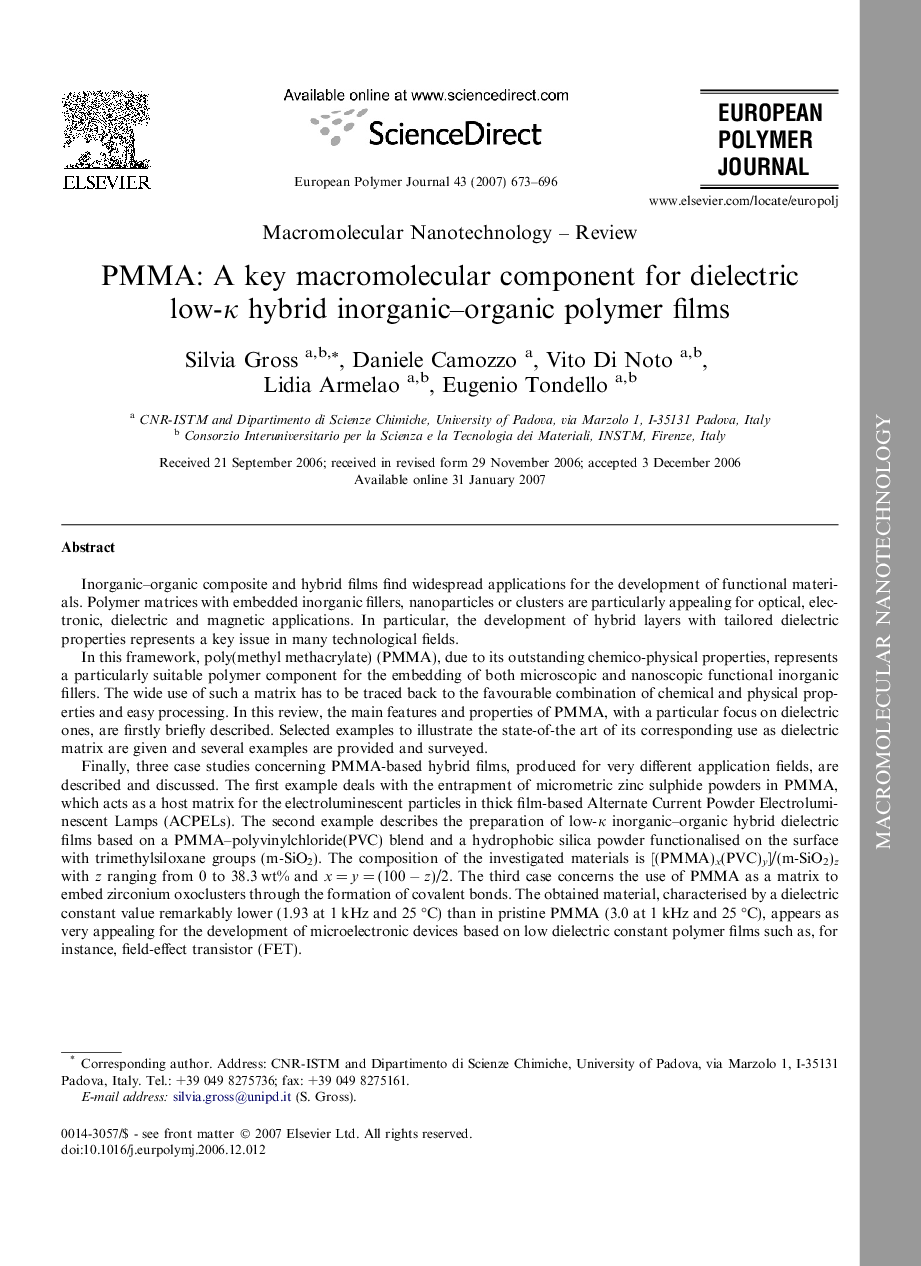| کد مقاله | کد نشریه | سال انتشار | مقاله انگلیسی | نسخه تمام متن |
|---|---|---|---|---|
| 1403647 | 984838 | 2007 | 24 صفحه PDF | دانلود رایگان |

Inorganic–organic composite and hybrid films find widespread applications for the development of functional materials. Polymer matrices with embedded inorganic fillers, nanoparticles or clusters are particularly appealing for optical, electronic, dielectric and magnetic applications. In particular, the development of hybrid layers with tailored dielectric properties represents a key issue in many technological fields.In this framework, poly(methyl methacrylate) (PMMA), due to its outstanding chemico-physical properties, represents a particularly suitable polymer component for the embedding of both microscopic and nanoscopic functional inorganic fillers. The wide use of such a matrix has to be traced back to the favourable combination of chemical and physical properties and easy processing. In this review, the main features and properties of PMMA, with a particular focus on dielectric ones, are firstly briefly described. Selected examples to illustrate the state-of-the art of its corresponding use as dielectric matrix are given and several examples are provided and surveyed.Finally, three case studies concerning PMMA-based hybrid films, produced for very different application fields, are described and discussed. The first example deals with the entrapment of micrometric zinc sulphide powders in PMMA, which acts as a host matrix for the electroluminescent particles in thick film-based Alternate Current Powder Electroluminescent Lamps (ACPELs). The second example describes the preparation of low-κ inorganic–organic hybrid dielectric films based on a PMMA–polyvinylchloride(PVC) blend and a hydrophobic silica powder functionalised on the surface with trimethylsiloxane groups (m-SiO2). The composition of the investigated materials is [(PMMA)x(PVC)y]/(m-SiO2)z with z ranging from 0 to 38.3 wt% and x = y = (100 − z)/2. The third case concerns the use of PMMA as a matrix to embed zirconium oxoclusters through the formation of covalent bonds. The obtained material, characterised by a dielectric constant value remarkably lower (1.93 at 1 kHz and 25 °C) than in pristine PMMA (3.0 at 1 kHz and 25 °C), appears as very appealing for the development of microelectronic devices based on low dielectric constant polymer films such as, for instance, field-effect transistor (FET).These three cases are paradigms of three different approaches to composite and hybrid materials based on the embedding of particles in PMMA polymer matrix.
Journal: European Polymer Journal - Volume 43, Issue 3, March 2007, Pages 673–696